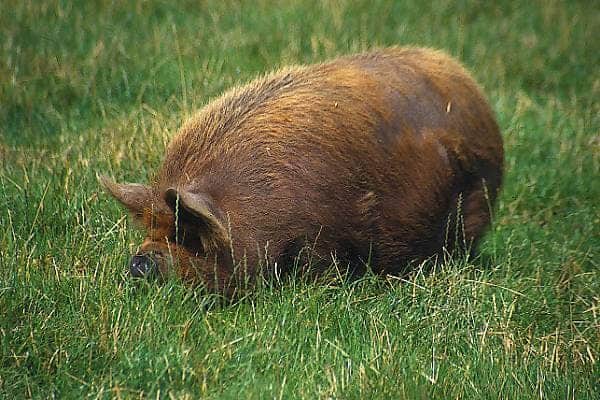
Sure to raise a slew of controversy and debate, researchers in Japan are currently investigating the possibility of growing human organs, like kidneys, livers or even hearts, inside pigs. A real life chimeric tale, as if spawned from the Island of Dr. Moreau. The challenges are numerous though, both technical (we’re talking about growing human organs in a foreign host), legal (human-animal hybrids are illegal in Japan) and of course moral (do we want living, breathing, organ farms – how would it be different from meat farms today?). For now, we can only entertain and ponder these questions, but in Japan things are beginning to shape up towards this goal.
The first steps in this direction were made by Hiroshi Nagashima, a professor at Meiji University, who made chimeric pigs – pigs that contain the genetic signature of two different species. A pilot experiment involved the breeding of what’s called an “a-pancreatic” pig. The genes that code the development of the pancreas in white pigs was switched off, then stem cells from a black pig are introduced into the white pig embryo. When the baby pig is born, it will look like a normal white pig, except it will have a black pig pancreas.
[RELATED] First chimera monkeys presented to the world
At Tokyo University, Professor Hiro Nakauchi is taking things further, by using induced pluripotent stem cells (iPS) – adult cell that are culture and hoaxed into behaving like stem cells, without the need to harvest stem cells from embryos. Nakauchi and team cultured iPS cells from brown mice skin cells and introduced these in the embryos of white mice, which similarly to Nagashima’s research had their pancreas development gene turned off. Nakauchi ended up with a white mouse with a brown mouse pancreas. The beauty of iPS cells, however, is that they can be used to develop into any kind of cells, like the constituting tissue that makes up organs. This is the basis for growing human organs in the lab, something that is currently in development with mixed results.
Man and beast
The Japanese researchers hope they can ultimately grow a human organ inside a pig host, or maybe some other surrogate animal model for that matter. If successful, the human organ grown would theoretically be identical to the human organ needing replacement, since it would have been grown from the patient’s iPS cells. The medical implications would be outstanding. Millions of people all over the world require an organ transplant of some kind and for many the waiting list is too long for survival. Organs grown this way would actually be ideal, since there wouldn’t be a case of biological incompatibility anymore.
Is such a thing possible in the first place?
Black pig pancreas in a white pig host. Brown mouse pancreas in a white mouse host. Human pancreas inside a pig. Obviously, the latter case doesn’t follow the same pattern. We’re talking about extremely distant species. With confidence, however, Prof Nakauchi claims it can be done. In Japan human-animal hybrids are illegal and if any of his research can go further, the laws need to be changed. If not, Nakauchi can always move his research to a more permissive country.

Then there’s another concern. In HG Wells’ sci-fi classic, The Island of Dr Moreau, an oddball scientists breeds all sort of chimeric creatures – grotesque beings that are horse, dog and pig at the same time (M’ling). Nakauchi assures that the genetically engineered pigs would still be pigs, it’s just that they’d be carrying human tissue. Anticipating controversy, the Japanese scientist points to In Vitro Fertilisation (IVF) which was invented in Britain in the 1970’s and which at the time sparked a lot of debate. Today, IVF is no longer seen as strange or unethical and in time Nakauchi’s research may also become accepted if the results measure up, he says.






